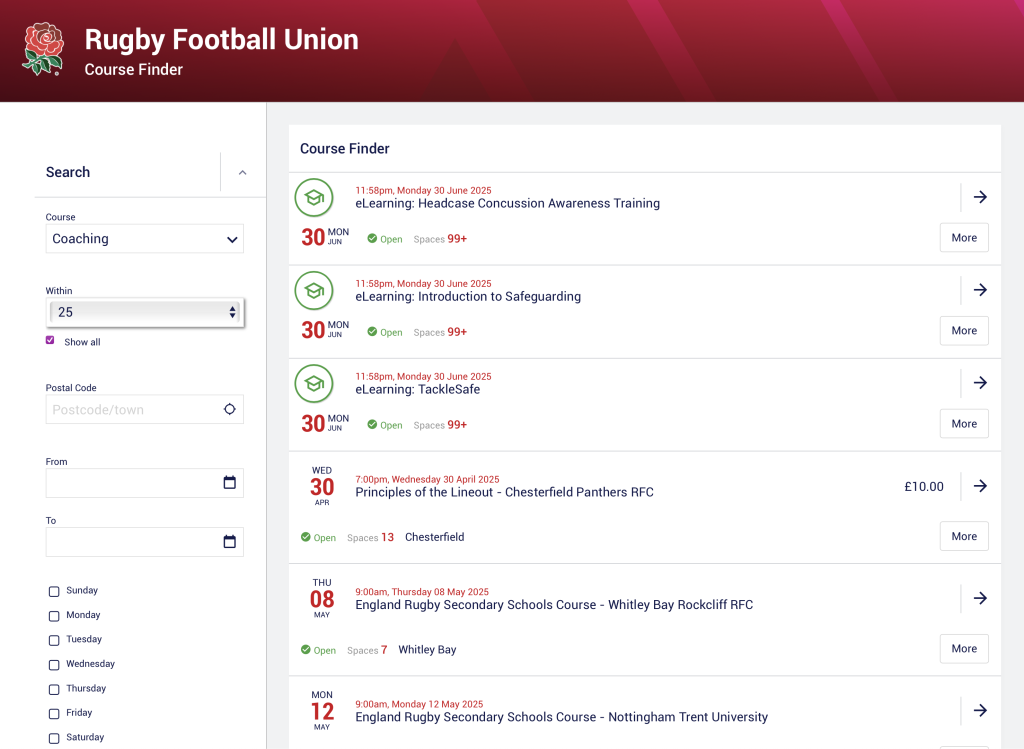Our Roots
The Eastern Counties Rugby Union (ECRU) has a rich history that reflects the evolution and growth of rugby in the eastern region of England.
1890
The Eastern Counties Rugby Union (ECRU) was founded to oversee and develop rugby in Essex, Suffolk, and Norfolk. It provided structure and governance for clubs in the region.
1948
Eastern Counties reached the County Championship final for the first time, finishing as runners-up.
1952
Cambridgeshire was officially incorporated into the Eastern Counties Rugby Union, expanding the union’s reach and influence.
1975
The ECRU men’s senior team again made it to the County Championship final, securing their place among the top county teams in England.
1987
ECRU established the Eastern Counties 1 league to provide a structured competition for clubs in the region, adapting over time to changes in English rugby.
1990
Eastern Counties had the honor of playing against Argentina during their British Isles tour. The match, held in Cambridge on October 30, saw Eastern Counties fall 15-28 to the visitors.
2003
Essex RFU split from ECRU, forming its own governing body and leaving ECRU to oversee Cambridgeshire, Norfolk, and Suffolk.
2021
Lisa Greetham, ECRU’s long-serving Admin Manager, retired after more than two decades of service, marking the end of an era in the union’s operations.
Today & Beyond
Now Eastern Counties are concerned with providing the best for their 55 clubs in terms of competition, coaching, facilities, advice and guidance and when available funding, all of which has benefited rugby in the region.
- Four hundred Patrons, Ten full-time staff and over one hundred volunteers.
- It polices the game through a disciplinary structure and a child welfare officer.
- It manages the regions funds.
- It caters for beach rugby, touch rugby, mini rugby, girls’ rugby youth rugby, rugby sevens, rugby tens whilst still focusing on the senior fifteen a side game played hard, fast and competitive.
In the true spirit of rugby football ECRU operates in partnership with many organisations including Local Authorities Education and Sport Development offices, Eastern Region Sports Development Association, Sport England, professional clubs, private businesses and many more.

The ECRU Raven
The history of the Eastern Counties Rugby Union (ECRU) is enriched by the story behind its emblem—the Raven. Adopted in 1926, the Raven symbolizes the region's deep-rooted connection to its Viking heritage.
Origin of the Raven
When ECRU was established in 1890, there was no official crest; initially, the Essex crest of Three Falchions was used, reflecting the predominance of Essex players.
However, as Suffolk and Norfolk became more involved in the union’s administration between the World Wars, the need for a unifying emblem emerged. After extensive research, it was observed that the Eastern Counties region closely aligned with the historic Danelaw—the area east of a line from the Wash to the River Thames, settled by Vikings following the Treaty of Wedmore in 879. The Vikings’ emblem, “Laud Eyra,” the Raven, was thus chosen to represent ECRU.
The new Raven Crest was officially adopted at the Annual General Meeting on October 14, 1926, and first appeared on the fixture card for the 1927-28 season.
Design and Contributions
The initial Raven design was contributed by Mrs. Holcombe Ingleby of Sedgeford Hall, Norfolk.
Her husband had inherited land in Ilford through his mother, a Valentine. Mrs. Ingleby provided a lifelike drawing of a raven, which, with minor modifications for textile production, became the basis for the Eastern Counties’ heraldic bird.
Danelaw and the Raven in Norse Mythology
The Danelaw refers to the region of England under Viking control following the Treaty of Wedmore.
This area included present-day Cambridgeshire, Norfolk, and Suffolk, among others. In Norse mythology, the Raven holds significant importance, often associated with the god Odin, who was accompanied by two ravens, Huginn and Muninn, symbolizing thought and memory. The choice of the Raven as ECRU’s emblem reflects this rich cultural heritage.
This emblem serves as a reminder of the region’s historical ties and the enduring legacy of the sport within the Eastern Counties.

